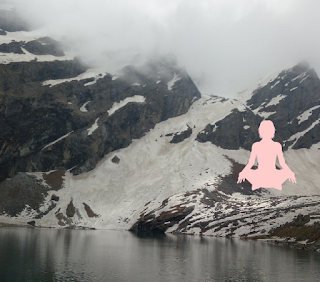How kaki Mudra reduces skin blemishes, increases facial lustre and enhances immune system
Mudra and Bandha are certain
postures of the body that can be completed in the stable postures or when practising
pranayama; and at the end in meditation. By adopting yoga’s principal the
aspirant can easily gain not only good health but also kundalini is successfully
awakened. By following the step by step techniques of Yoga, the aspirant will improve
their perception especially when faced with difficult situations.
Mudras can affect various glands
and keep the body on track. A gland is a group of cells or organs that produce
a secretion. In the body, glands perform vital functions and produce juices or
hormones; without which the body can become sick and lifeless. The Gheranda
Samhita has described 25 mudras and bandhas. The most important among them are
mula bandha, jalandhar bandha, uddiyan bandha; mudras- khichari mudra, manduki
mudra, ashwini mudra, kaki mudra, matangini mudra, bhujangini mudra,
viparitkari mudra and tadagi mudra. All of these mudras are beneficial for good
health; and considered as the essential for the advanced mudras that comes in
the second group which purify and channel the prana energy in the body. So all
the mudras which come in the second group are advanced in nature and used for
specific purposes.
Advanced group of mudras comprise
of thirteen mudras; which must be accomplished with full awareness of the mind
because the mind can control the flow of the prana and both mind and prana
profoundly are associated with each other, prana follows the mind. Still the
mind, focus the mind upon an object would easily control the prana. Flow of
prana energy enhances with steady mind.
Advanced mudras that affect the
prana are Maha mudra, Mahabandha mudra, Yoni mudra, Mahabedha mudra, Vajroni
mudra, Shambhavi mudra, Shaktichalini mudra, Prithvidharna mudra, Jaladharna
mudra, Vayavidharna mudra, Agnidharna mudra, Akasidharna mudra and Pashni
mudra.
Kaki means crow. Kaki mudra has been
learned through observing crow’s activities by ancients’ yogis watching how it
becomes healthy whole of its life with the full vigour and keen observation
within. Yogis found the secret from their breathing technique which keeps them
healthy throughout life. Kaki mudra covers all glands and entire abdomen and ensures
all Prana-vayu is balanced in the body. Kaki mudra practise is a bit of a variation
of jalandhar bandha and but you inhale through the lips and out through the
nose or mouth, either fill the air first in the lungs or fill the air in the
stomach.
Kaki mudra:
Choose quiet and pollution free
place.
Sit in the comfortable asana.
Make your lips as like the beak
of a crow.
Draw in air slowly and to fill
the stomach.
Bend your head so that chin
touches the throat.
Hold within for some time and
drawn out through the mouth.
Repeat it as much as you can. Beginners
must start with one minute and gradually increases its length time. There is no
maximum limit. Do for as longs as you like and are comfortable.
Precaution: avoid doing kaki mudra after a meal.
Health Benefits:
·
Kaki mudra enhances secretion of gastrin.
Gastrin is a hormone produced by the pyloric gland area of the stomach that
stimulates the secretion of gastric acids. It stimulates the secretion of
pepsin; an enzyme produced by the stomach that chemically breaks down peptide
bonds in polypeptides and proteins.
·
Kaki mudra stimulates a protein splitting enzyme
and hydrochloric acid.
·
Kaki mudra improves digestion and cures all
disorders of the stomach and it happens the same as like of a crow.
·
Kaki mudra reduces skin blemishes and increases
facial lustre within a few days.
·
It enhances thyroid and parathyroid, are known
for immune system and heat supplier of the body that which affects the stomach
further.


Very nice
ReplyDelete